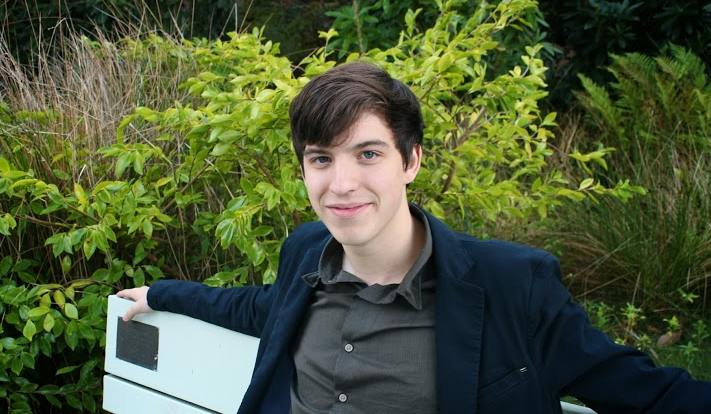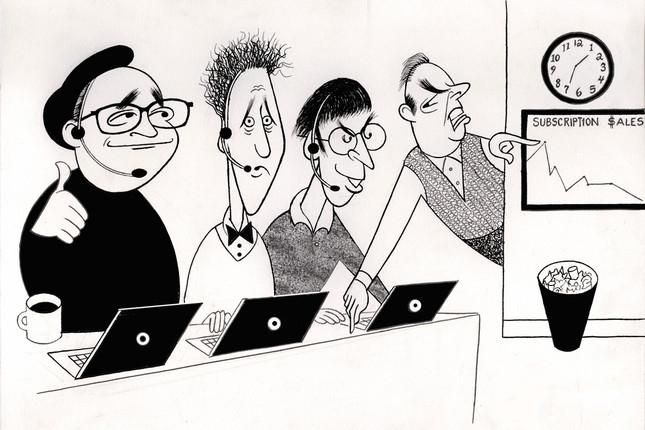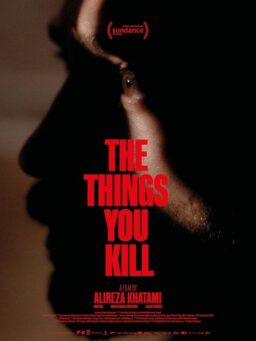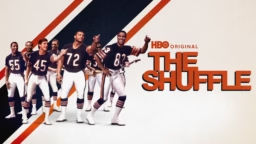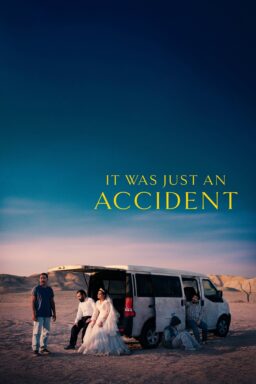1.
“The Wolf of Broadway: Two Years Selling Theater Tickets for the Best/Worst Boss Ever”: Jordan Hoffman published a telling story in Vanity Fair yesterday about his time as a Broadway telemarketer for a mercurial boss.
“Vincent was simultaneously the worst and best boss I ever had. A former pianist, actor and, as he reminded us regularly, assistant to Leonard Bernstein, he was nearing retirement age and worked for Roundabout because he loved what the company was doing—reviving respected plays and musicals with big, boldfaced names for limited runs and supporting smaller work by emerging writers. I took the gig when there was really no work in New York and figured it was tangentially related to the arts, though our call center was in a stained-carpet dump nowhere near a stage.”
2.

“Does Kevin Costner’s Comeback Year Really Spell a Change For the Actor”: There was a time when Kevin Costner was a bonafide movie star in Hollywood. Adam Belletto of Film School Rejects contends whether 2014 will be the year Costner returns to the spotlight.
“Costner is a standard sort of all-American leading man. A guy who’s handsome but not staggeringly so, roguish but not quite Harrison Ford roguish. He’s got the vague air of a father figure, and sticks to wholly American characters. Cowboy. Sports Guy. Hero who Vaguely Resembles Indiana Jones. In the early nineties, that meant wads upon wads of cash. Costner gathered up an armful of Oscars for Dances With Wolves, and followed that up with Robin Hood: Prince of Thieves, JFK and The Bodyguard, all of which either crushed the box office or received hearty acclaim from the critics. Then in ’95, Waterworld did neither in spectacular fashion. Two years later, The Postman did the very same.”
3.

“The Dark Power of Fraternities”: After a year of investigating the Greek system, Caitlin Flanagan unveils the lurid nature of fraternities in America at The Atlantic.
“College fraternities—by which term of art I refer to the formerly all-white, now nominally integrated men’s ‘general’ or “social” fraternities, and not the several other types of fraternities on American campuses (religious, ethnic, academic)—are as old, almost, as the republic. In a sense, they are older: they emanated in part from the Freemasons, of which George Washington himself was a member. When arguments are made in their favor, they are arguments in defense of a foundational experience for millions of American young men, and of a system that helped build American higher education as we know it. Fraternities also provide their members with matchless leadership training. While the system has produced its share of poets, aesthetes, and Henry James scholars, it is far more famous for its success in the powerhouse fraternity fields of business, law, and politics. An astonishing number of CEOs of Fortune 500 companies, congressmen and male senators, and American presidents have belonged to fraternities. Many more thousands of American men count their fraternal experience—and the friendships made within it—as among the most valuable in their lives. The organizations raise millions of dollars for worthy causes, contribute millions of hours in community service, and seek to steer young men toward lives of service and honorable action. They also have a long, dark history of violence against their own members and visitors to their houses, which makes them in many respects at odds with the core mission of college itself.”
4.![]()

“The Highs and Lows of High and Low“: As apart of The Dissolve‘s “Movie of the Week” feature Mike D’Angelo examines Akira Kurosawa‘s classic film, High and Low.
“High And Low rarely gets mentioned when cinephiles talk about the medium’s most masterful formal achievements. Even among Akira Kurosawa’s films, Seven Samurai, Throne Of Blood, and Ran are more likely to be cited for purely visual mastery, if only because they’re all more superficially dynamic. But few movies have ever been as subtly, methodically composed as High And Low, in which every shot reflects, to some degree, the dichotomy presented by its title. The film’s narrative is neatly bifurcated between high and low, both literally (meaning geographically) and figuratively. Kurosawa’s camera follows suit, employing wholly different modes in its first and second halves. It’s almost hard to believe that certain sequences were directed by the same man, much less that they belong to the same picture.”
5.

“The Wind Rises“: With the release of Hayao Miyazaki’s final film today, Dana Stevens of Slate writes about her experiences with the filmmaker and his latest opus.
“Miyazaki creates complex fantastical worlds that function according to their own mysterious but incontrovertible logic—and then embeds those worlds within equally specific real-life settings (so that, for example, the magical undersea kingdom in Ponyo believably exists side by side with the bustling small port city where the human hero, Sōsuke, lives with his mother). The interpenetration of reality and fantasy, memory and imagination, and past and present often constitutes an explicit theme in his work—never more so than in The Wind Rises, a biopic of the Japanese aviation engineer Jiro Horikoshi that also seems to function as a kind of vicarious autobiography for the director. Like Jiro, Miyazaki came of age in a ravaged postwar Japan, though in the engineer’s case, the conflict in question was the first world war, not the second. And of course, like the absentminded, idealistic Jiro, Miyazaki would grow up to become a kind of professional dreamer, a single-minded creator of beautiful, intricate things. In Jiro’s case, these beautiful things—most notably his design for the Zero fighter plane, which became one of Japan’s most effective weapons in World War II—were requisitioned as implements of death, an irony that suffuses every frame of this dark and difficult film, which, it should be stressed, is not at all for young children. Between its upsetting wartime imagery, its often-technical dialogue (a major scene involves a group of engineers debating the best rivet), and its long, companionable scenes of ‘historical smoking,’ The Wind Rises is as adult as a clean movie can get.”
Image of the Day

Still taken from Spike Jonze’s Her. More on his mastery of the close-up at the A.V. Club.
Video of the Day
Dialectic coach Andrew Jack gives us a tour of accents from the British Isles. Yes, this is amazing. Read more at the BBC Radio.
